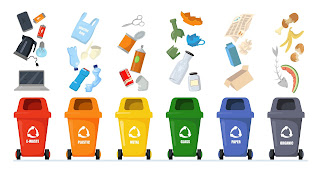The Life of a T-Shirt: What Are the Different Stages?
Most of us have owned a t-shirt at least once in our lives. But do we ever stop and think about what it took to make that piece of clothing? The manufacturing process for a t-shirt is far more complex than most realize, involving multiple stages that come together to produce the final product. Understanding the life cycle of a t-shirt—from raw materials to production, purchase, care, and disposal—can help create an awareness of how these products are made, sold, and ultimately thrown away. This blog post will provide an overview of each step involved with the lifecycle of a t-shirt.
Know The Different Stages Of The Life Of A T-shirt
Design & Raw Materials Production
This stage involves coming up with a design and gathering all of the raw materials that are necessary for production. Some of these resources include cotton, polyester, dyes, water, and energy. Cotton is typically grown on farms before being transported to factories where it is then spun into yarn and eventually woven into fabric. This fabric is then treated with dyes to give it color, shape, and texture. All of this requires lots of energy and natural resources like water.
Manufacturing & Distribution
Once all of the raw materials are assembled, they are then ready for manufacturing. During this stage, machines cut and sew together pieces of fabric to construct a t-shirt shape. After the shirt has been formed, it undergoes quality control checks before being ready for sale in stores or online shops. The last step in this stage involves distributing the product from its manufacturing site to retailers around the world.
Use & Disposal
The use stage begins when customers purchase products from retail stores or online sites such as Amazon or eBay. This phase ends when customers dispose of their t-shirts after they have reached the end of their useful life—whether through recycling programs or simply throwing them away in landfills or incinerators (which release harmful pollutants into our environment).
Recycling & Upcycling
We know that textile waste has become an increasingly pressing environmental issue it’s estimated that 68 million tons of textiles are discarded each year. Luckily there are ways we can reduce our footprint by recycling old clothing items such as t-shirts through organizations like H&M's Garment Collecting Program which recycles clothes into new products or fabrics that can be used again in future productions such as insulation material for homes or stuffing for furniture cushions. There’s also upcycling which turns discarded items into something more valuable like creating patchwork quilts out of old t-shirts or turning them into reusable grocery bags.
Conclusion:
From production to disposal and everything in between a t-shirt’s life cycle tells us a lot about how our clothing choices impact our planet's health. It’s important to be mindful of where our clothes come from and how we can help reduce textile waste by considering more sustainable options such as using recycled materials in production processes or upcycling old clothes instead of throwing them away. So next time you reach out for your favorite t-shirt… think again!
Where did this item come from? What kind of story does it tell? And how can I help ensure its responsible disposal? These questions may seem small but they make a big difference when it comes to protecting our planet's future. Who knew something as simple as wearing a T-Shirt could do so much?



Comments
Post a Comment